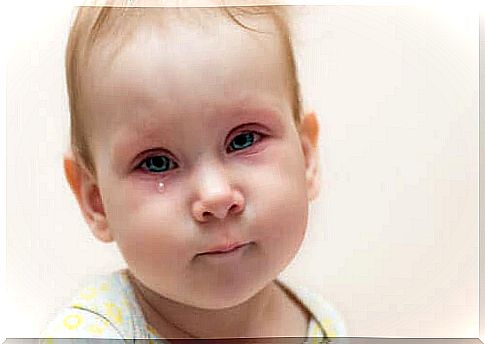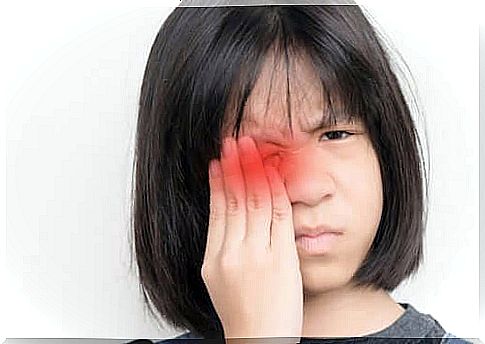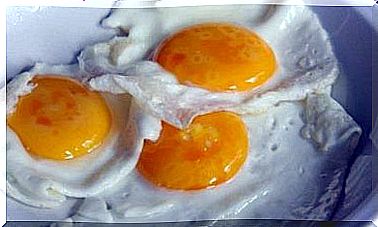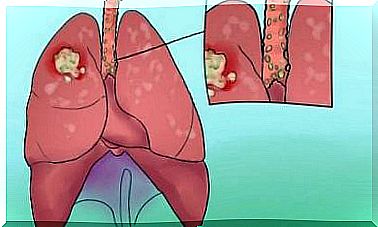Conjunctivitis In Children – How To Proceed?

Conjunctivitis in children can have various causes: bacteria, viruses, allergic processes or the ingress of foreign bodies into the eye. Be sure to visit a pediatrician before any symptoms of discomfort in your child.
Conjunctivitis in children and adults is a disease in which the conjunctiva layer, the clear lining of the eye, becomes inflamed. The condition causes itching and redness in the eyes, but does not usually worsen eyesight , according to the National Library of Medicine in the United States.
Contrary to popular belief, conjunctivitis can have many causes besides bacterial infections. Because viruses, allergic reactions, injuries, the use of contact lenses and even insomnia are also taken into account.
In addition, for children, special care should be taken when dealing with this pathology. Organizations such as Dospediatrasencasa have warned us that conjunctivitis is one of the most common childhood diseases. Do not worry, in this article we will show you how to deal with this disease.
Conjunctivitis – what does it look like?
As we said before, conjunctivitis refers to inflammation of the conjunctival layer of the eye. According to sources specializing in ophthalmology, such as Pro visu , it most commonly affects both eyes at the same time, although it can also be distributed asymmetrically.
Scientific studies show that it is the most common eye disease in children aged 1 to 9 years old. Of all pediatric visits due to eye discomfort, almost 41% correspond to conjunctivitis, while the remaining 30% are due to injuries.

Conjunctivitis in children – symptoms
Now that you have determined the nature of this disease and its prevalence in infants, it’s time to find out how to detect it. Pediatric sources such as Kidshealth help us with this by listing the most important symptoms in children. These are:
- Red eyes.
- Eye discomfort: The child may say that he feels “sand”.
- Discharge from the eye.
- Pain and conjunctivitis.
- Some children may develop blepharitis and photophobia (direct light causes discomfort).
Conjunctivitis in children – causes
As we have already said, the causes of conjunctivitis are not summarized only in the case of infection. The sources already cited and the National Eye Institute (NEI) investigate various causes of conjunctivitis. We will tell about them below.
Bacterial conjunctivitis: the most common form of the disease
In children, bacterial infection is by far the most common cause of conjunctivitis (it occurs in up to 78% of cases). This does not apply to adults, as viruses cause 36% of symptoms and bacteria 40%.
The microorganisms that cause this pathology are usually the same that cause respiratory diseases or are present on the skin: Staphylococcus aureus, Streptococcus pneumoniae, Haemophilus influenzae and Moraxella catarrhalis.
Viral conjunctivitis in children
This is a much less common causal factor in infants, as viruses cause approximately 13% of conjunctivitis cases. According to Library Virtual em Saúde, adenoviruses (ADV) account for up to 50% of viral conjunctivitis in children.
Other causes of conjunctivitis in children
Not everything is about viruses or bacteria. Here are some of the possible causes that remain to be investigated:
- Allergic : corresponds to 2% of infantile conjunctivitis. They are seasonal and are often associated with sinusitis.
- Due to foreign objects: Entry of foreign objects into the eyes or through the use of contact lenses.
- Yeast infections.
- Amoeba infections.
- Pollution : internal or external, caused by pollution or chemicals.
- Traumatic : from bumps and scrapes.
Children are much less likely to develop this type of conjunctivitis. It is rare for an infant to be exposed to toxic chemicals or wearing contact lenses long enough for pathology to develop.
Home care
Viral and bacterial conjunctivitis is highly contagious, according to the Centers for Disease Control and Prevention (CDC). Therefore, in the case of a child with this condition, extreme precautions are necessary. This includes the following behaviors:
- Wash your hands frequently with soap and warm water, especially after handling your little one.
- Avoid touching and rubbing your eyes. Likewise, teach your baby not to do this. This prevents disease transmission and deterioration of the patient’s clinical picture.
- Wash your child’s pillowcases, sheets, towels and other supplies more often than usual.
- Do not use an infected child’s personal belongings.

When to see a doctor?
As pointed out by the pediatric organizations we already mentioned, there are serious eye diseases that have symptoms similar to conjunctivitis. Therefore, no matter how serious this disease may be, if the child complains of eye discomfort, a visit to the pediatrician is mandatory.
Conjunctivitis of viral origin is usually self-limiting, i.e. heals on its own within a few days. On the other hand, those caused by bacteria require the use of antibiotics in the form of drops or ointments.
Don’t treat conjunctivitis on your own
Playing doctor at home is never a good idea. For example, it makes no sense to treat a child with viral conjunctivitis with antibiotics. Moreover, it can only worsen the condition of the infant.
Therefore, when faced with any visual discomfort that your child reports, consultation with the pediatrician is a logical and responsible step. Not all eye pain is a reaction to conjunctivitis, so timely and accurate diagnosis is imperative.









